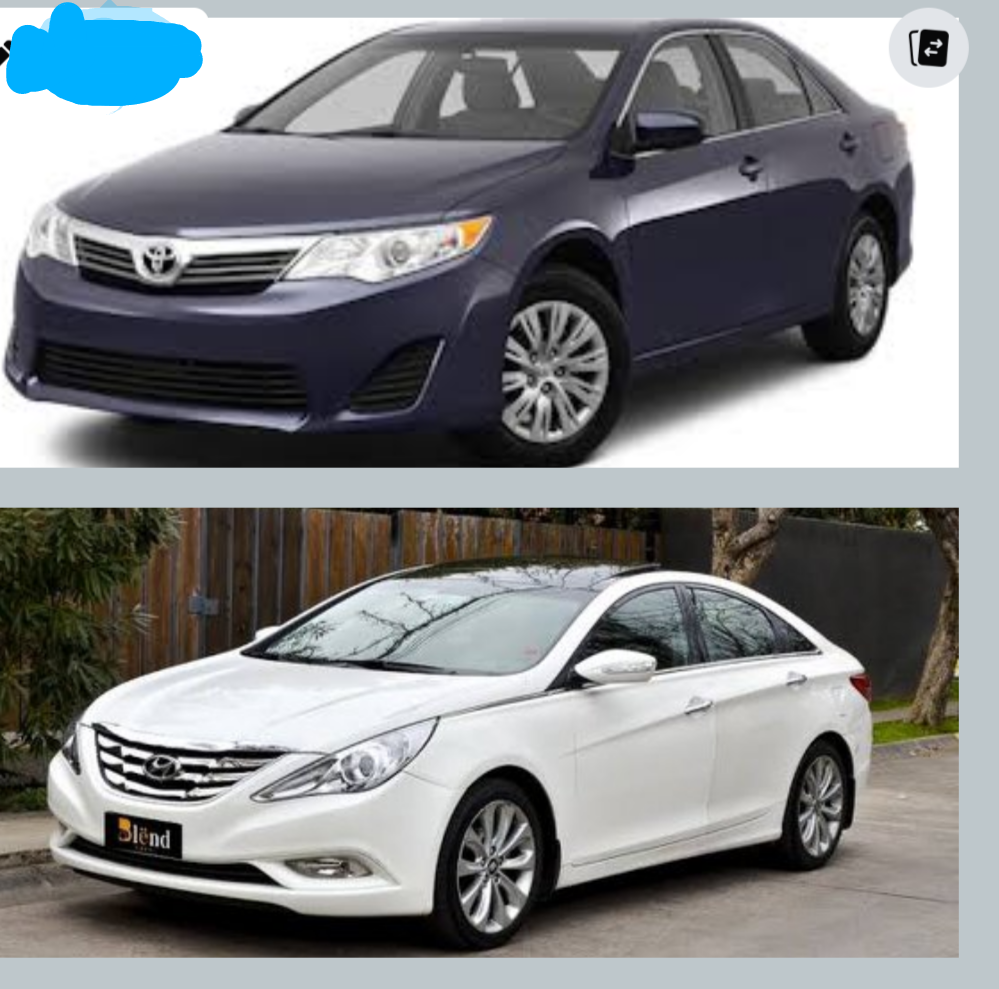The 2012 Toyota Camry and 2012 Hyundai Sonata are both popular midsize sedans, but they have distinct strengths and weaknesses.
Here’s a comparison:
2012 Toyota Camry
Pros:
Reliability & Resale Value: Toyota’s reputation for long-term durability is strong, and the Camry holds its value well.
Smooth Ride: Comfortable suspension, good for daily commuting.
Fuel Efficiency: The 4-cylinder model gets around 25 MPG city / 35 MPG highway
Low Maintenance Costs: Fewer major issues compared to some competitors.
Cons:
Bland Styling: Conservative design, not as sporty as rivals.
Basic Interior: Materials feel durable but less upscale than the Sonata.
Less Engaging Drive: Steering and handling are tuned for comfort, not excitement.
2012 Hyundai Sonata
Pros:
Stylish Design: Sleek, modern exterior with a more premium interior feel.
More Features: Available tech like Bluetooth, navigation, and a better infotainment system.
Good Fuel Economy: The 4-cylinder gets **24 MPG city / 35 MPG highway** (similar to Camry).
Cons:
Less Proven Reliability: Some reports of engine issues (Theta II engine recalls).
Softer Handling: Not as precise as some rivals, though comfortable.
Lower Resale Value: Depreciates faster than the Camry.
Which One Should You Choose?
Pick the Camry if you prioritize long-term reliability, low maintenance, and resale value.
Pick the Sonata if you prefer better styling, more features, and a touch of luxury.
Both are good choices, but in Nigeria, the Camry is the safer bet for longevity, while the Sonata offers more flair and tech. If buying used, check for proper maintenance records, especially for the Sonata’s engine history.
Would you like recommendations on specific trims or engines?
Drop a comment.
Automob101 ©️

Comments
Post a Comment
Wish to leave a message?